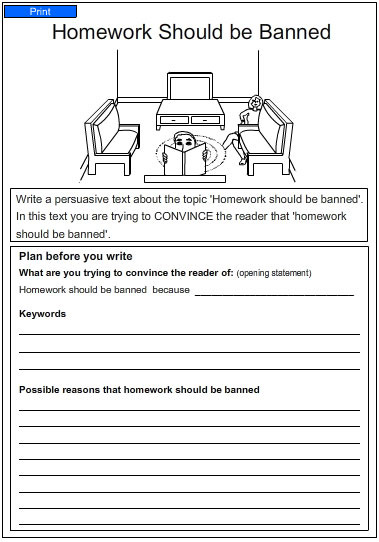Back
Homework Should be Banned
- Grade: Year 3
Activity type: Printable
To save results or sets tasks for your students you need to be logged in. Join Now, Free
Homework Should be Banned
- Course
English - Grade
Year 3 - Section
Writing - Outcome
Writing a Persuasive Text: 'Homework Should Be Banned' - Activity Type
Printable - Activity ID
17496

